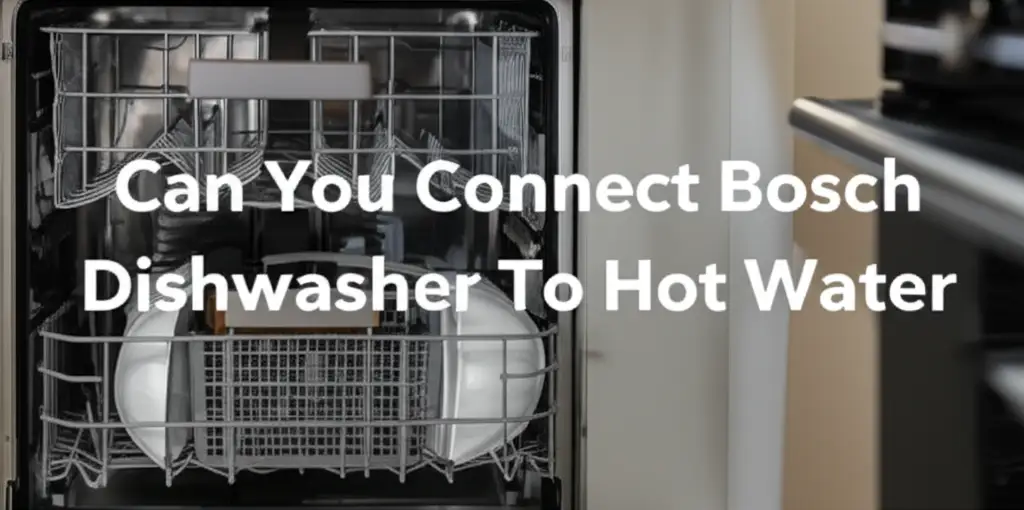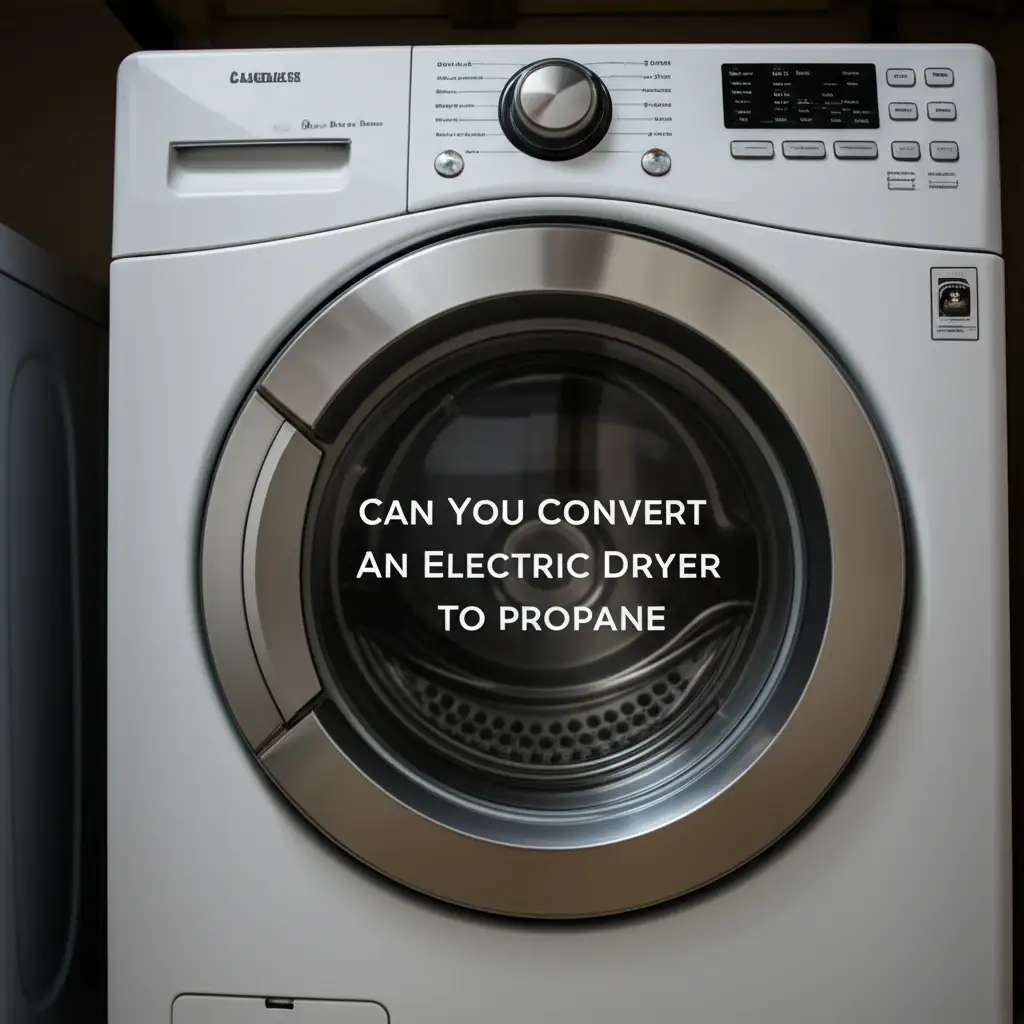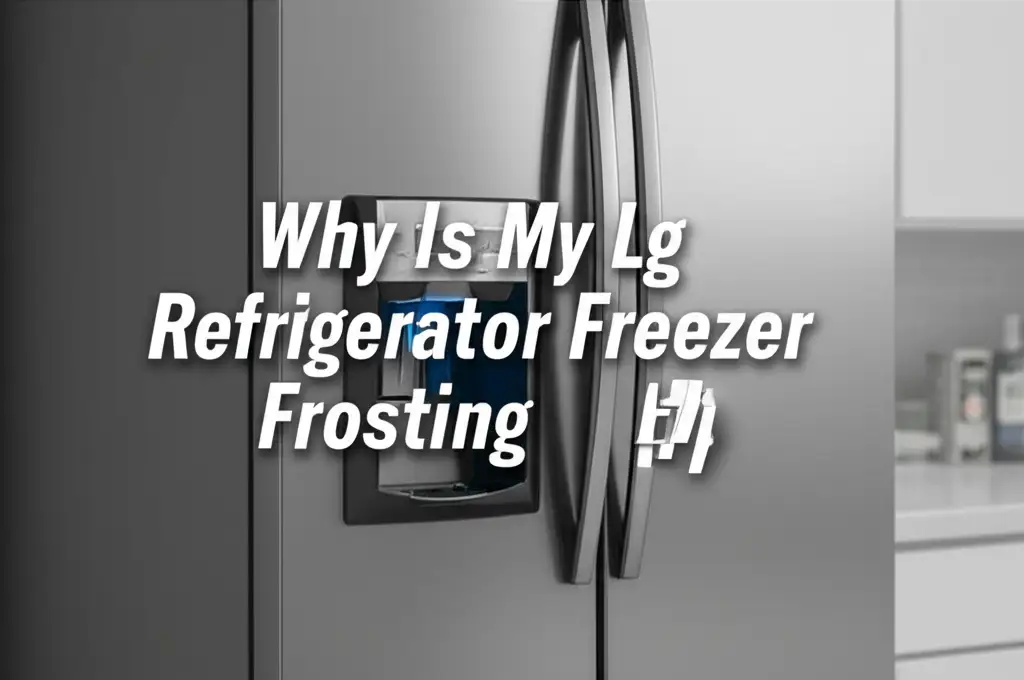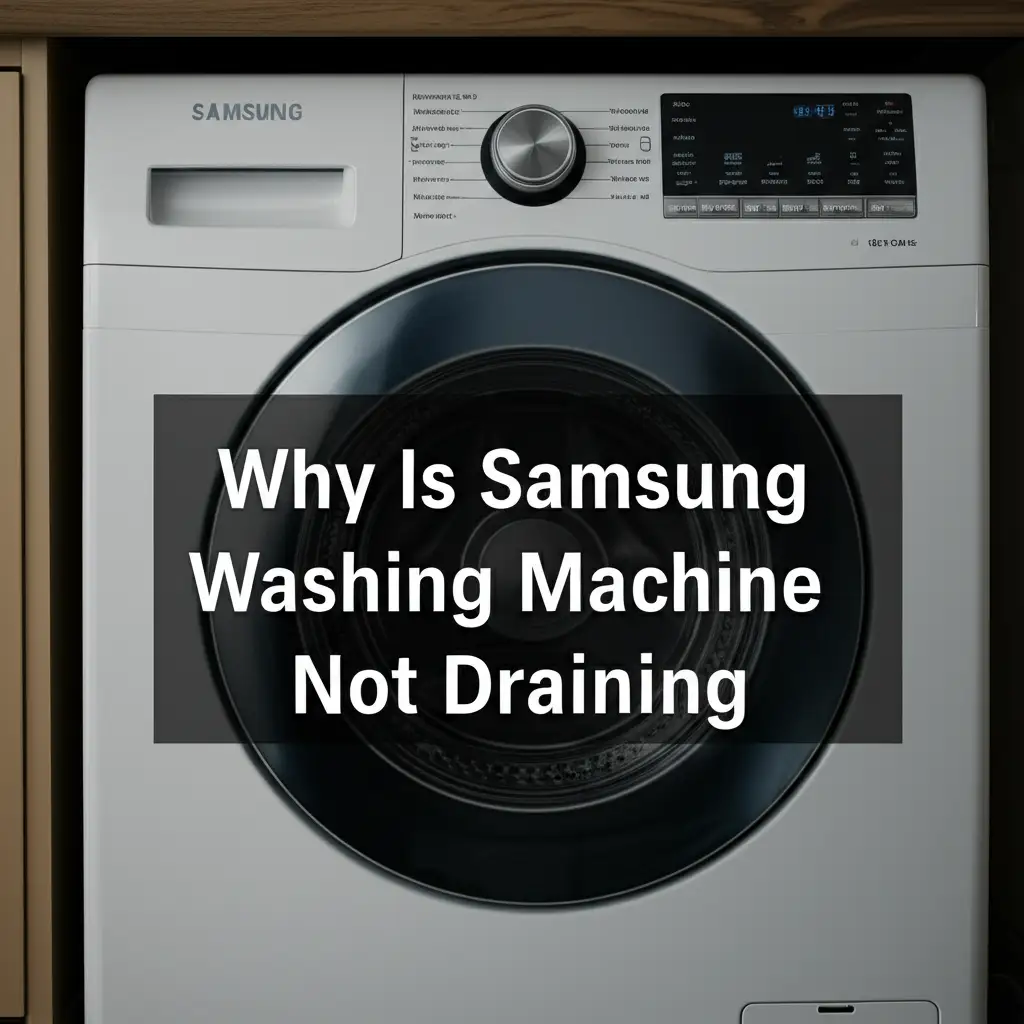· Davia Murnell · Home Appliances · 18 min read
What Is The Disadvantage Of Bottom Freezer Refrigerator
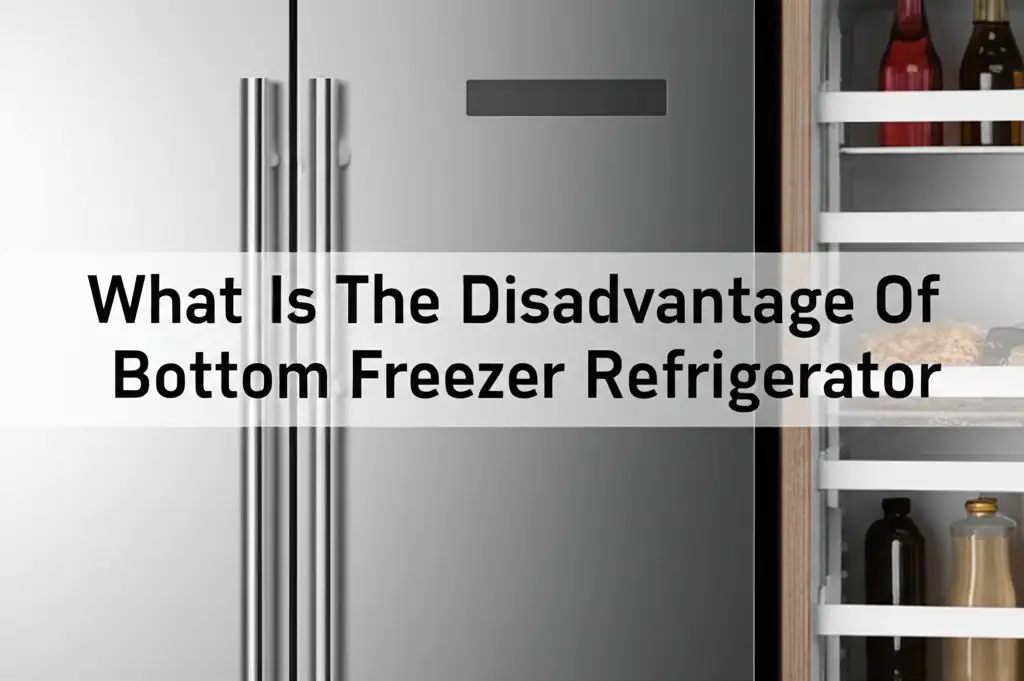
Unpacking the Disadvantages of Bottom Freezer Refrigerators
Choosing a new refrigerator is a significant decision for any home. We often focus on the attractive features and benefits of modern appliances. However, understanding the potential drawbacks is just as important. Many homeowners choose a bottom freezer refrigerator for its convenient access to fresh food. Yet, this popular design also presents specific challenges.
Before you make a purchase, it is wise to explore the full picture. This article will detail the main disadvantages of a bottom freezer refrigerator. We will look at ergonomic issues, organization hurdles, and potential cost implications. My goal is to give you a clear, balanced view. This information will help you decide if a bottom freezer refrigerator fits your home and lifestyle.
Takeaway
- Bottom freezer refrigerators often require bending for frequent fresh food items.
- Organizing frozen goods in deep drawers can be difficult, leading to lost items.
- These units typically carry a higher initial purchase price than top freezer models.
- Maintenance or repair of complex drawer mechanisms and ice makers can be more costly.
- The wider footprint and specific door/drawer clearances affect kitchen layout.
- Energy efficiency can vary, with potential cold air loss from pulling out the large freezer drawer.
A bottom freezer refrigerator moves the freezer compartment to the lower section of the appliance. This design means the fresh food section sits at eye level. While this layout offers easy access to daily items, it introduces challenges. These include frequent bending to reach the freezer, difficult organization of frozen goods, and potentially higher costs for purchase and repair.
Ergonomic Challenges and Bending for Fresh Food
One primary disadvantage of a bottom freezer refrigerator involves ergonomics. Most people access fresh food much more frequently than frozen items. With a bottom freezer unit, the main refrigerator compartment sits at the top. This means you must bend down to reach items in the freezer drawer. For some people, this constant bending can become a real problem. It affects daily convenience and physical comfort.
Consider a typical family. They open the refrigerator door multiple times a day for drinks, snacks, and meal ingredients. Every time they need something from the crisper drawers or the lower shelves, they must bend down. This motion puts strain on the back and knees. Over time, this can lead to discomfort or worsen existing joint conditions. For individuals with back problems, arthritis, or mobility limitations, this design is especially challenging. It can turn a simple task into a painful chore.
Accessibility of Fresh Food
The fresh food section is the most used part of any refrigerator. In a bottom freezer model, shelves for milk, produce, and leftovers are at eye level. This arrangement makes it easy to grab items you use often. However, the lowest shelves and crisper drawers are still quite low. You still bend down to retrieve vegetables, fruits, or large containers. This is true even if the freezer is below. You might find yourself crouching often.
Imagine you are preparing dinner. You need carrots from the crisper, then some cheese from a lower shelf. Each time, you bend. This constant up-and-down movement can be tiring. It contrasts with top freezer models where the refrigerator is lower, but the freezer is the less-accessed section. The convenience of eye-level fresh food often comes at the expense of bending for the bottom-most fresh food items.
Heavy Item Retrieval
Retrieving heavy items from the bottom of the refrigerator or from the freezer drawer can be tricky. Large bottles of soda, milk jugs, or heavy produce bags often sit on the lowest shelves. Lifting these items from a bent-over position strains your back and arms. The same challenge applies to heavy frozen goods in the pull-out drawer. You might store a large turkey or a bag of frozen vegetables in the freezer. Pulling out the drawer and then lifting these heavy items from a low position requires careful movement.
My own experience shows that a large container of ice cream, while light, can be difficult to access when hidden under other items. Similarly, a heavy bag of frozen chicken can be a strain to lift. You may need to lean far into the drawer to reach items at the back. This becomes more difficult as you age or if you have any physical limitations. Regular bending and lifting of heavy items are significant disadvantages of bottom freezer refrigerators.
Organization and Accessibility of Frozen Goods
While bottom freezers offer the convenience of a drawer, organizing frozen items can be surprisingly difficult. Unlike a top freezer with shelves, a bottom freezer typically features deep bins or baskets. This design often leads to a “dumping ground” effect. Items get piled on top of each other. This makes it challenging to find specific foods. You might find yourself digging through a mountain of frozen goods just to locate that one bag of peas.
The deep drawer design means that older items can easily get lost at the bottom. This can lead to food waste. You might discover forgotten packages of meat or vegetables long after their prime. This issue is particularly true if you do not regularly rotate your frozen stock. Keeping track of what you have and what needs to be used becomes a constant battle. This lack of visibility can be a major frustration.
Deep Drawer Design Issues
The primary organization challenge comes from the deep drawer design. Picture a large, open bin. You place various-sized frozen items inside. Flat items like pizzas or ice packs might slide to the bottom. Smaller items, like bags of berries or frozen bread, get buried under larger boxes. This creates a messy pile rather than an organized system.
Even with dividers, the depth of the drawer makes it hard to see everything at a glance. You often have to pull out the entire drawer and manually move items around. This takes time and energy. It also exposes all your frozen food to warmer air, potentially affecting its quality. I find myself often struggling to pull out the drawer fully and then dig through it, especially when it’s packed. To maintain proper freezer conditions, it’s essential to clean the freezer regularly, which can be an added task with this layout. If you need to deeply clean the freezer, accessing all corners of these deep drawers can be challenging. For advice on thorough cleaning, consider checking out guides on how to clean deep freezer or how to clean a deep freezer, which share similar principles.
Food Visibility Problems
Lack of visibility is a major concern with bottom freezer drawers. When you open the drawer, you only see the top layer of items. Everything below is hidden from view. This makes meal planning difficult. You cannot quickly check your inventory. You might buy something you already have because you forgot it was buried in the freezer.
This issue is amplified if you have a large family or buy groceries in bulk. Your freezer quickly becomes full. Trying to locate a specific item in a packed drawer requires pulling out items, shifting them, and essentially reorganizing every time. This can be frustrating. It also means you spend more time with the freezer open, which wastes energy. My own solution involves using many small bins within the large drawer, but this also reduces overall space. Getting to the very back of the drawer can also be a challenge, similar to when you need to remove an LG refrigerator bottom freezer drawer for cleaning or maintenance.
Higher Initial Cost and Repair Expenses
Bottom freezer refrigerators generally come with a higher price tag than their top freezer counterparts. This is a significant disadvantage for budget-conscious buyers. The design, which often includes more sophisticated drawer mechanisms, better finishes, and advanced features, contributes to this increased cost. You are paying for the convenience of eye-level fresh food access.
Beyond the initial purchase, potential repair expenses can also be higher. The complex drawer slides, specialized ice makers, and integrated electronics in bottom freezer units can lead to more expensive parts and labor when issues arise. While no appliance is immune to problems, the design of a bottom freezer can make certain repairs more involved and costly. This affects the long-term ownership cost.
Premium Price Tag
When you shop for a new refrigerator, you will likely notice the price difference. Bottom freezer models often sit in a mid to high price range. They are generally more expensive than top freezer models of similar capacity. This premium reflects their more complex engineering and often more aesthetic designs. Many bottom freezer units feature French doors, specialized compartments, or advanced cooling systems. These add to the manufacturing cost.
If you are trying to stick to a strict budget for your kitchen appliances, a bottom freezer refrigerator might stretch your limits. You might find yourself paying hundreds of dollars more for a bottom freezer unit. This extra investment does not always translate directly into better performance or longevity. It primarily buys you the ergonomic advantage of a higher fresh food section.
Potential for Costly Repairs
The advanced mechanisms in a bottom freezer refrigerator can lead to more expensive repairs. The freezer drawer operates on sturdy slides that can wear out over time. If the slides break, replacing them can be a significant repair. Additionally, many bottom freezer models incorporate ice makers directly into the freezer drawer. These ice makers are often more complex than those found in top freezer units. They can be prone to issues like freezing up, leaks, or mechanical failures.
My personal experience with appliance repairs suggests that labor costs for these types of units are often higher. Technicians might charge more because the repair process is more intricate. Accessing components can be challenging, requiring partial disassembly of the drawer system or inner panels. For example, if your Kenmore bottom freezer refrigerator is not cooling, the issue might be complex, leading to higher repair bills. You can find out more about issues like why is my Kenmore bottom freezer refrigerator not cooling. Always factor in potential repair costs when considering your overall budget for the appliance.
Potential for More Frequent Maintenance and Issues
Bottom freezer refrigerators, while convenient, can sometimes demand more attention regarding maintenance. Their design often incorporates more moving parts, especially within the freezer drawer mechanism. This increased complexity can lead to specific issues that might not be as common in simpler top freezer models. Keeping these units running smoothly often requires diligent care and attention to potential problems.
Issues like seals wearing out, ice maker malfunctions, or drawer alignment problems can occur more frequently. These are directly related to the design and how the freezer section is accessed. Regular cleaning and checking of components become more important to prevent larger, more expensive problems down the line. Neglecting these small maintenance tasks can lead to bigger headaches.
Drawer Mechanism Wear
The freezer drawer in a bottom freezer refrigerator is subjected to constant pulling and pushing. This continuous motion can lead to wear and tear on the drawer slides and rollers. Over time, these parts can become stiff, noisy, or even break. A drawer that does not slide smoothly is annoying and can make it harder to access your frozen goods. Replacing these components can be a specialized repair.
Additionally, the seals around the freezer drawer are crucial for maintaining temperature. If the drawer is frequently pulled out or improperly closed, these seals can wear out or become compromised. A faulty seal allows warm air to seep into the freezer, causing frost buildup and making the compressor work harder. This leads to increased energy consumption and potential food spoilage. For example, why is my Maytag refrigerator freezer frosting up is a common issue linked to compromised seals or drainage problems, and it requires attention.
Condensation and Frosting Concerns
Due to the design of the pull-out drawer, bottom freezers can be more prone to condensation and frost. When you pull out the large drawer, a significant amount of cold air can spill out quickly. This allows warm, humid air from the room to enter the freezer. When this warm air meets the cold interior, it condenses and can form frost. This is especially true if the drawer is left open for extended periods while you search for items.
Excessive frost buildup reduces the freezer’s efficiency and takes up valuable storage space. It can also cause food to develop freezer burn more quickly. While most modern refrigerators have auto-defrost features, consistent humidity entering the unit can still lead to problems. This can also put extra strain on the cooling system. Keeping the freezer clean, including the floor, can help manage condensation issues. Knowing how to clean freezer floor helps in these scenarios. Regular maintenance, such as ensuring the drawer closes properly, helps to minimize these issues. You might also need to learn how to change water filter on Kenmore bottom freezer refrigerator if your model has that feature, adding to the list of maintenance tasks.
Space Utilization and Footprint
While bottom freezer refrigerators offer excellent interior capacity for fresh food, their overall design can pose challenges for kitchen layout and space utilization. These units often have a wider footprint than equivalent top freezer models. This is due to the requirements of the pull-out freezer drawer and the generally larger size of these appliance types. It means you need to carefully measure your kitchen space.
The specific way the freezer drawer opens also impacts nearby cabinetry and walkways. Unlike a traditional door that swings out, a drawer pulls straight out. This requires clear floor space in front of the refrigerator. If your kitchen is small or has a narrow galley design, a bottom freezer unit might feel bulky. It could impede traffic flow or block access to other areas when the drawer is open.
Wider Door Swing/Drawer Pull
The term “door swing” is typically for traditional doors, but for bottom freezers, it’s the “drawer pull.” When you open a bottom freezer, the entire drawer extends outward. This requires a considerable amount of clear space in front of the refrigerator. Depending on the depth of the drawer, it might extend 20-30 inches from the refrigerator’s face. In a tight kitchen, this can be a major inconvenience.
Imagine your refrigerator is next to an island or a wall. When you pull out the freezer drawer, it might hit the island or block the pathway. This limits your kitchen’s functionality. You cannot easily pass by while someone is accessing the freezer. This is a critical consideration for smaller kitchens or homes with high traffic. My own kitchen needed careful planning to ensure enough clearance.
Cabinetry Fit Considerations
The dimensions of bottom freezer refrigerators can also affect how they integrate with existing kitchen cabinetry. These units are often taller and wider than older top freezer models. This means they might not fit into standard appliance openings. You might need to modify your cabinets. This adds to the overall cost and complexity of installing a new refrigerator.
Additionally, the refrigerator doors, especially on French door models, require clearance to swing open fully. If your cabinets or walls are too close, the doors might not open wide enough. This limits access to interior shelves and drawers. It can also cause damage to the refrigerator doors or the surrounding cabinetry over time. Always measure your space and consider door and drawer clearances before buying.
Energy Efficiency Variations
When we talk about the overall efficiency of refrigerators, it is important to consider the design. Bottom freezer models, despite often being newer and equipped with advanced technology, can sometimes present unique challenges related to energy efficiency. While cold air naturally falls, preventing it from escaping is key. The way a bottom freezer drawer opens might allow more cold air to escape compared to a traditional swing door. This can potentially make the compressor work harder to maintain consistent temperatures.
Manufacturers design bottom freezers to be energy-efficient. They use good insulation and smart compressors. However, how you use the refrigerator also plays a role. If the freezer drawer is opened frequently or for long periods, cold air spills out. This is different from a top freezer or side-by-side. With a top freezer, opening the main fridge door does not affect the freezer as much. This distinction is worth noting for those focused on energy consumption.
Cold Air Retention
The principle of cold air retention is crucial for refrigerator efficiency. Cold air is denser than warm air, so it naturally sinks. In a top freezer unit, when you open the fresh food door, the cold air from the main compartment can stay largely contained. However, in a bottom freezer, when you pull out the large freezer drawer, the cold air immediately spills out onto the floor. This means a greater volume of cold air escapes the appliance.
This rapid loss of cold air forces the compressor to work harder and longer to bring the internal temperature back down. Over time, this extra effort can lead to higher electricity bills. While modern bottom freezers are designed to minimize this effect, it remains an inherent characteristic of the pull-out drawer design. My personal observation is that the freezer section can feel warmer quickly if the drawer is left open too long.
Compressor Workload
The increased cold air loss from a bottom freezer drawer directly impacts the compressor’s workload. The compressor is the heart of the refrigeration system. It works to cool the refrigerant and maintain the desired internal temperatures. If more cold air escapes, the compressor must run more frequently or for longer durations. This extra workload can lead to several disadvantages.
First, continuous compressor operation uses more electricity. Second, it can put more stress on the compressor itself, potentially reducing its lifespan. While a well-maintained refrigerator should last many years, a constantly overworking compressor might wear out faster. This could lead to premature breakdowns and costly repairs. Understanding these dynamics is important when considering the long-term efficiency and durability of a bottom freezer unit.
Noise Levels and Operation Sounds
All refrigerators make some noise during operation. They hum, click, and gurgle. However, bottom freezer refrigerators can sometimes produce different or more noticeable sounds due to their specific design and mechanics. The moving parts of the freezer drawer and the location of certain components can contribute to unique noise profiles. This can be a minor annoyance for some. For others, it might be a significant factor, especially in open-plan living spaces where kitchen noises carry easily.
The sounds can range from the smooth glide of the drawer to the subtle whir of fans or the clicking of an ice maker. While manufacturers work to minimize noise, the inherent design of a bottom freezer can introduce sounds not present in other configurations. Being aware of these potential noise levels helps you make an informed choice for your quiet home.
Drawer Mechanism Noise
The most direct source of unique noise in a bottom freezer refrigerator comes from the drawer mechanism itself. When you pull out or push in the freezer drawer, the slides, wheels, and supports can create sounds. These sounds might be a gentle glide or, over time, a louder squeak or groan if parts wear out or become misaligned. If the drawer is heavy with food, the effort of moving it can amplify these noises.
Newer models often feature soft-close mechanisms and high-quality slides to reduce noise. However, as the appliance ages, these parts might degrade. Regular use will eventually lead to some level of operational sound. For those sensitive to noise, this might be a subtle but persistent disadvantage. It is a daily interaction that you will notice.
Fan and Compressor Activity
The location of the compressor and condenser fan in bottom freezer models can also influence noise levels. In many bottom freezer designs, these components are situated at the bottom, near the freezer drawer. While this placement is common across all refrigerator types, the specific airflow and insulation within a bottom freezer unit might allow some operational sounds to be more noticeable.
As the compressor works to maintain temperature, particularly if cold air frequently escapes from the drawer, it might run more often or for longer periods. This leads to more consistent fan noise or compressor hum. My experience has been that some models can be surprisingly quiet, while others have a noticeable low hum. If you are troubleshooting a noisy refrigerator, understanding the typical sounds and differentiating them from unusual ones can be helpful. For example, if you hear unusual noises and the freezer is not cooling, this could indicate a problem like why is my GE refrigerator freezer not freezing. It is worth checking reviews for specific models regarding their reported noise levels before buying.
FAQ Section
Q1: Are bottom freezers less energy efficient than top freezers? A1: Not necessarily. Modern bottom freezers are designed with energy efficiency in mind. However, because cold air escapes easily when the large freezer drawer is opened, the compressor might work harder. This can lead to slightly higher energy consumption if the drawer is opened frequently or left open too long. How you use the appliance plays a big role in its actual energy use.
Q2: Is it harder to clean a bottom freezer refrigerator? A2: Cleaning a bottom freezer can present unique challenges. The deep, pull-out drawer makes it harder to reach items at the very back or to thoroughly wipe down all corners. Spills can collect at the bottom of the drawer, requiring it to be removed for proper cleaning. This process can be more involved than cleaning shelves in a top freezer.
Q3: Do bottom freezers have more repair issues than other types? A3: Bottom freezers often have more complex mechanical parts, especially around the pull-out drawer and integrated ice makers. These moving parts can be prone to wear and tear over time. While overall reliability varies by brand and model, these specific components might incur higher repair costs if they fail compared to simpler designs.
**Q4: Why are bottom freezer refrigerators often more expensive?
- bottom freezer
- refrigerator disadvantages
- kitchen appliances
- freezer storage
- appliance maintenance
- home improvement


